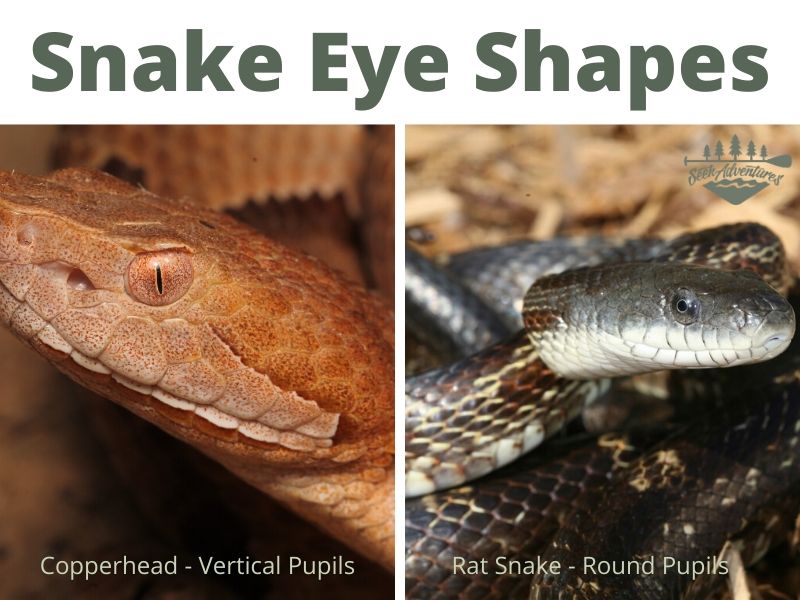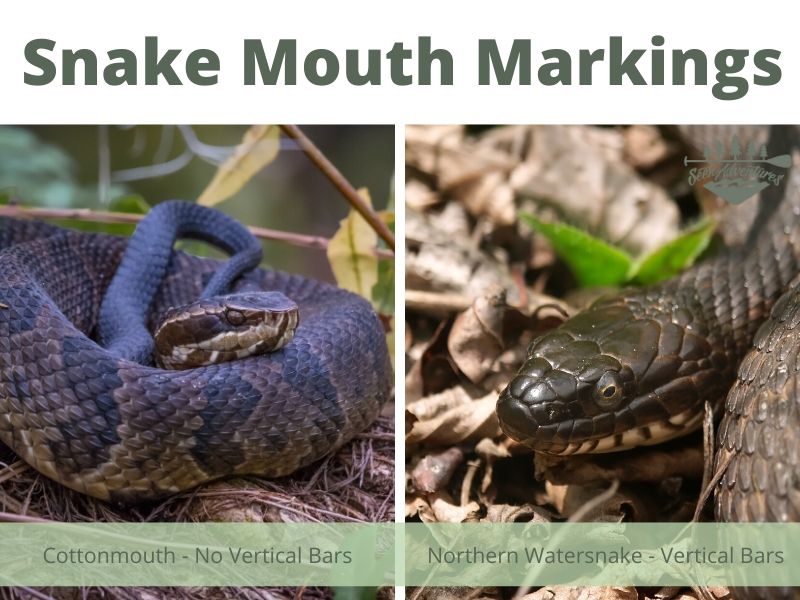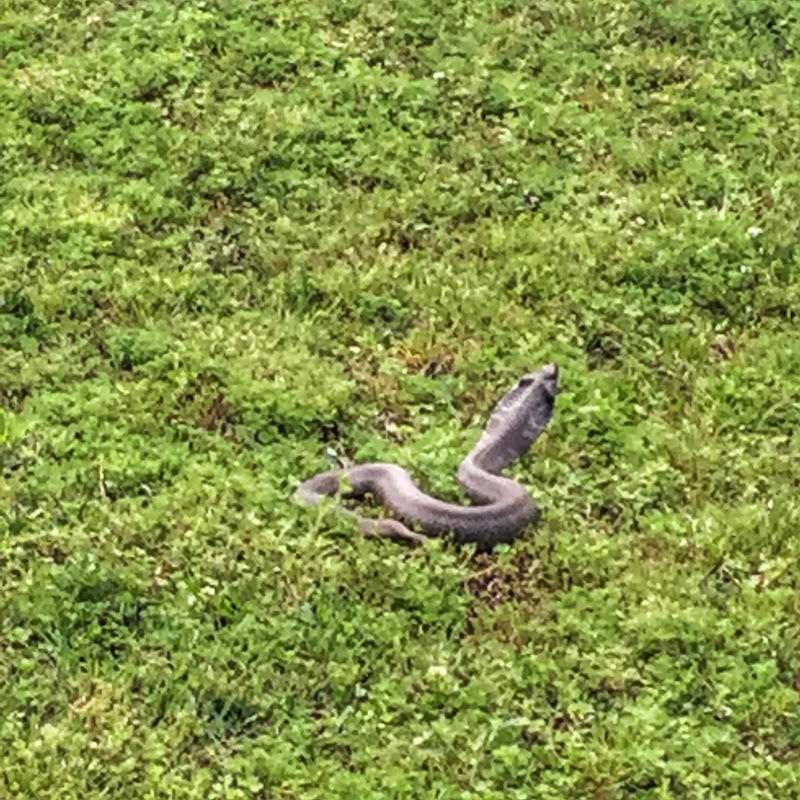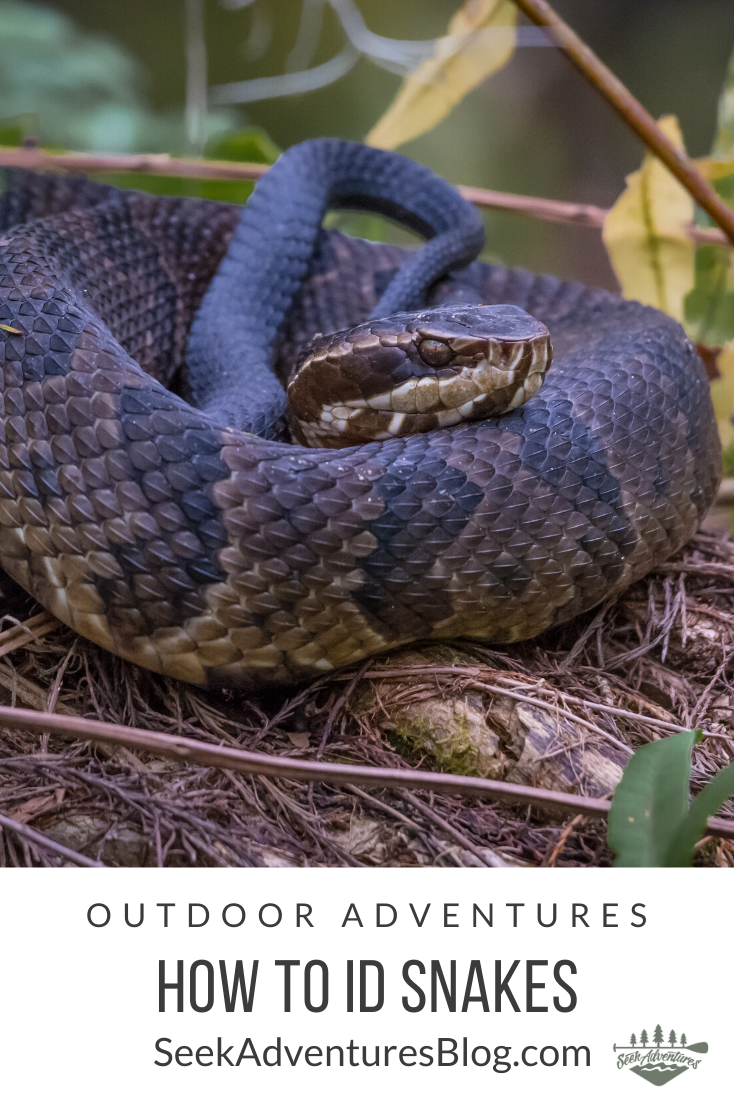Being able to quickly identify snakes from a distance is a valuable outdoor skill that can keep you safe when you hike, camp, or participate in other outdoor activities.
When I was a kid, I loved snakes and bugs and all kinds of critters. Once, while riding my bike, I accidentally ran over a snake, but it lived, so I picked up to bring it home and keep it as a pet. It turns out that it is actually quite tricky to ride a bike while carrying a snake. They like to slither all over you. So I did what any normal 10-year-old girl would do, and I found a beer can in a ditch that I could use to transport the snake. There I was, cruising down the dirt road, natty light in hand bringing home my new pet snake. Of course, my mother was adamant that no snake would live in our house, so a new school-appropriate container was secured, and I brought the snake to my 5th-grade teacher, where we kept it as a classroom pet.
At the tender age of 10, I wasn’t too concerned with Snake ID, but I also lived in Vermont, where of the 11 species of snakes in the state, the only venomous snake was the Timber Rattler which was also EXTREMELY rare. Here in Arkansas, we are home to 36 species of snakes, of which 6 are venomous. Being able to accurately identify a snake is a much more critical skill.
Poisonous vs. Venomous Snakes
If you hope to sound knowledgable when it comes to snakes, NEVER ask if a snake is poisonous. Although the question is generally understood, the word ‘poisonous’ doesn’t apply to most snakes. According to biologists, poison is something that is ingested, while venom is something that is injected into the body. Since most snakes do damage by biting and injecting a toxin, they are considered venomous.
How to Identify Snakes: 6 Snake ID Tips
North American has a lot of different snakes, and they can vary from region to state and even areas within states. Snakes can often have different coloring based on their habitat, the season, or if they are juvenile or adult, so some snakes are difficult to identify at a quick glance. Having some tricks that can help you to quickly identify snakes, particularly venomous snakes, from a safe distance can help you stay safe when camping, hiking, or spending time outdoors.
These snake identification tips are meant to serve as a guide and are not intended to be hard and fast rules. There are always exceptions to rules, so unless you are 100% certain, you should assume any snake you see is venomous. That sounds silly, but it’s the best way to stay safe.
-
Color and Pattern
As I mentioned earlier, color alone isn’t the best way to determine species. Snakes can be different colors depending on their age, location, and other factors. I have seen copperheads with textbook copper coloring, but I have also seen some that are dark brown or even gray. One thing that remains, despite their coloring, is the “Hershey kiss” pattern, as shown in the photo below.

Many venomous snakes have distinctive patterns, so research the snakes in your area and get to know their patterns. Arkansas is also home to the Texas Coral Snake (venomous), which has a pattern and coloration very similar to the non-venomous milk snake and the non-venomous scarlet snake. On old rhyme is often used to help you determine the difference:Red and Yellow – Kill a Fellow
Red and Black – Friend of Jack -
Pupil Shape
You probably don’t want to get close enough to examine the pupils of a snake unless you are sure it is safe, but pupils can be an indicator. Non-venomous snakes will often have round pupils, while venomous snakes will have vertical, cat-like pupils.

-
Rattles
If you have rattlesnakes in your area, rattles are a good indicator of a venomous species. With that being said, many snakes will shake their tail as a defensive mechanism. If there are dry leaves near the snakes tail, the sound can mimic that of a rattlesnake. In that case, it’s probably just best to retreat anyway as that snake feels threatened.
-
Body Shape
Snakes are all shaped relatively the same, but there are some distinctions between species. For example, rat snakes can have similar coloring to a cottonmouth (water moccasin) as can several species of water snakes. Rat snakes tend to be much longer, while cottonmouths are often bulky, and their tail seems to go from very thick to a sudden point. Understanding some of these subtle differences in body shape can help you make a split-second distinction between species.
-
Markings Around the Mouth
Labial scales are located around the mouth of snakes and other reptiles. Water moccasins are often difficult to distinguish from other water snakes and dark-colored snakes, but the labial scales can be a dead giveaway. You will notice the difference in these pictures below. The rat snake pictured has clear vertical bars on its labial scales. The cottonmouth is missing those markings, and almost appears to have horizontal markings.

-
Immerse Yourself in Photos of Snakes
I belong to an Arkansas Snake Identification group on Facebook. This group has excellent moderators that are very knowledgable, so false ID’s are very rare and are usually deleted if they are made on accident. This means the group is exceptionally accurate, so I know the labels on the photos are correct. I try to spend about 30 minutes each week, scrolling through the images and testing my ability to make quick identifications. When I first began, I was often wrong. After several months, I have much higher accuracy, but it has also proved helpful in the wild on several occasions. I have immersed myself in photos to the point that I feel confident making an idea on the trail.
3 Snake Identification “Myths”
The following tips are often recommended as ways to identify venomous snakes. I have pulled these aside because they are often the most inaccurate ways to correctly identify snakes and can lead to the most misidentifications.
-
Head Shape
It is often said that venomous snakes have a triangle-shaped head and that this is an excellent way to ID a snake. The problem with this method is that it is not always accurate and can often lead to non-venomous snakes being labeled as venomous.
Coral Snakes are a good example. Coral snakes do NOT have a triangle head shape. The width of their heads is very similar to their body and is decidedly not triangle shaped.
The eastern hognose snake is another good example as it had a very flat, angular head, and it can even mimic the shape of a cobra. This has sadly led to countless hognose snakes being killed when they are actually one of the coolest snake species. They happen to be my personal favorite.

As it stands, ALL snakes can flatten their head as a defensive mechanism; thus, I do not recommend identifying snakes or deciding between venomous and non-venomous snakes based on head shape alone.
-
Swimming Style
The cottonmouth (water moccasin) is very prevalent across Arkansas. We also have several other species of snake that live in and around the water. I have heard people say that venomous snakes will swim on TOP of the water while non-venomous snakes will swim under the water. This is simply not true. In fact, all snakes can swim when they need to, and they can swim both on top of the water or partially submerged.
-
Odor
For years, whenever we have spotted a venomous snake, I have heard my husband say, “It’s weird that we couldn’t smell it.” After hearing this phrase many times, I began to think that maybe it was because snakes didn’t have a smell. Some people have claimed that copperheads smell like cucumbers and that rattlesnakes have a musky odor. In the last 20 years, I have never noticed any type of overwhelming odor when it comes to snakes. If I’m able to smell it, I’m guessing that I am WAY closer than I need to be!
When it comes to identifying snakes, it’s always best to air on the side of caution if you live In an area with several species of venomous snakes. I’d rather just keep my distance than make a mistake with the snake ID.
Read Next
- Snake Safety for Kids and Families
- Hiking With Kids | Which Insect Repellent Do I Need?
- S-S-S-Snakes in Arkansas
- 5 Reasons to Use a Walking Stick
- Water Safety Tips for Toddlers and Children
- How to Identify Poison Ivy
Pin this post about Snake Safety to Pinterest to save it for later.

